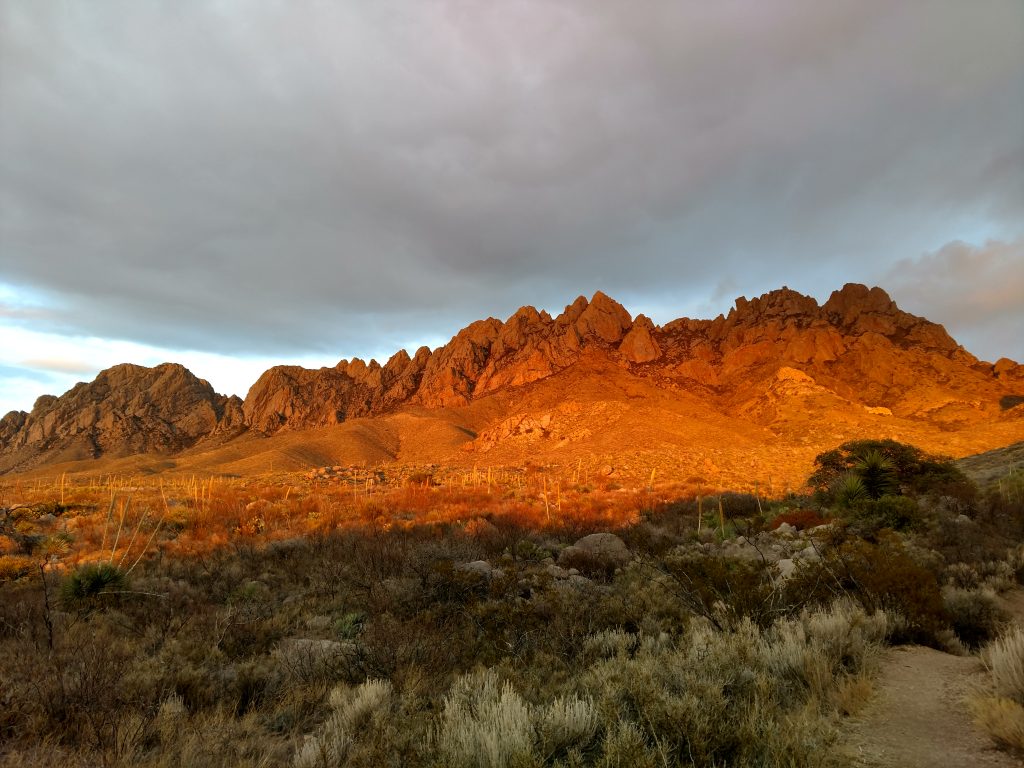
Southern New Mexico’s Las Cruces is quickly becoming one of my favorite outdoorsy towns. It has none of the notoriety (or crowds) that other “adventure towns” have in the Southwest. Yet, its surrounded by mountain ranges and very close to several national park units. Of the many mountains nearby, Organ Needle is the highest and most striking
Rising some 5,000' above the surrounding area and Las Cruces, the Organ Mountains are a beautiful and imposing range. They are named for their fluted appearance, much like an old cathedral's organ. Many great scrambles and hikes get you deep into their back-country.
Organ Needle Basics
Organ Needle stands at almost exactly 9,000'. Maps don't show any verified measure but my GPS indicated I was over 9,000' at the summit. The route to the top is short but very steep. There's class III-IV exposure at the top; for those unfamiliar with the YDS rating system, Class III is considered a hands-and-feet scramble. Personally I found the scrambling section technically easy and with good quality rock. However it was scary. I imagine less experienced scramblers might find it too difficult and dangerous. It is definitely not a hike.
Although the route is well-established and frequently climbed, it is not marked and there are no signs. Generally there's a clear herd path and cairns (sometimes called "ducks") marking the way. Route finding was generally easy but a map and GPS are essential.
Getting to the trailhead is easy and the roads are paved and in excellent quality. Essentially, plug in directions to this point known as La Cueva.
As a final note on the basics, Organ Needle is most frequently climbed in the fall and spring. Summer is too hot and winter can bring snow and ice. I discovered both at the top when I climbed it in late January. Microspikes are probably sufficient unless there's been a recent winter storm.
Here's a map of my route:
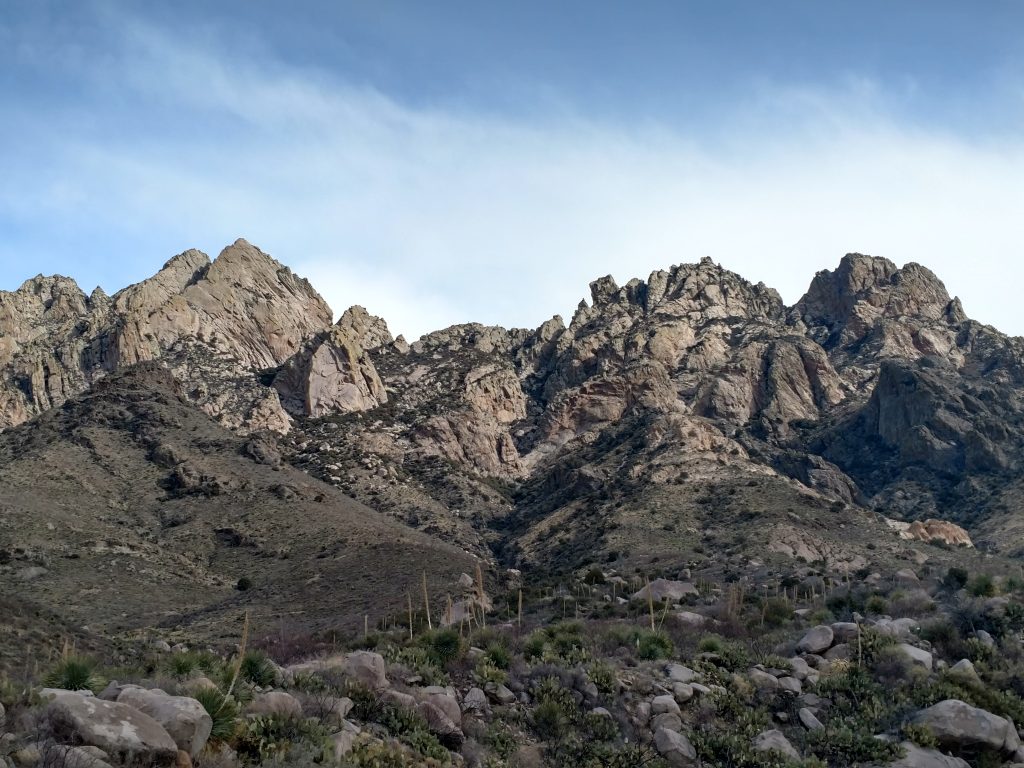
Organ Needle: Trailhead to Entrance of Fillmore Canyon
Since I was visiting in January, I didn't really have a choice in timing so I prepared as best I could for winter conditions.
Starting at the La Cueva picnic area, I made my way to the trailhead and started on a well-beaten path to Filmore Spring. After about 0.1 miles, I took a left and followed the trail around a massive rock outcrop. The well-beaten path continued for another 0.6 miles and arrived at a fork with an interpretive sign. I went left at the fork, passing through a horse/cattle guard.
The trail remained in good condition for another 0.2 miles to the entrance of Filmore Canyon.
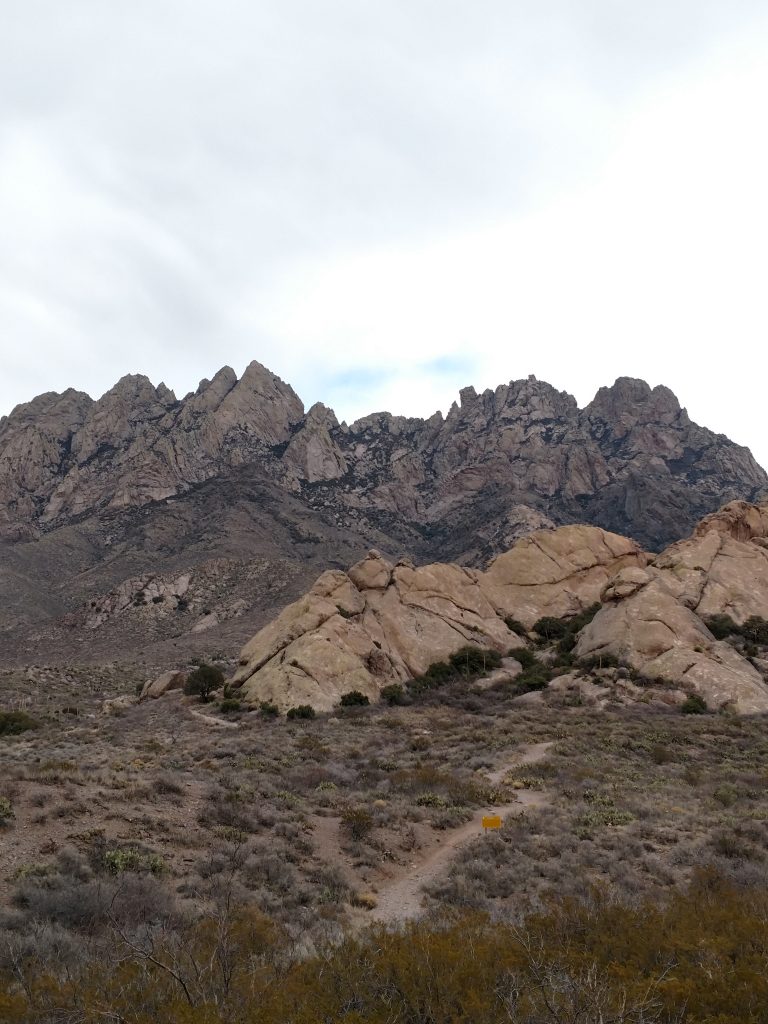
Fillmore Canyon to Juniper Saddle
From the entrance of Fillmore Canyon, an obvious herd path deviates to the left and stays above the canyon's rim through scrub and cactus. As of early 2020, the trail is generally pretty clear and infrequently flagged. I took the path of least resistance and found my way through with minimal cactus bushwhacking.
At roughly 6,600' the herd path briefly descends into the canyon and a clear path is cut through the dense trees. Emerging on the other side, I followed a very clear though quite steep path all the way to Juniper Saddle.
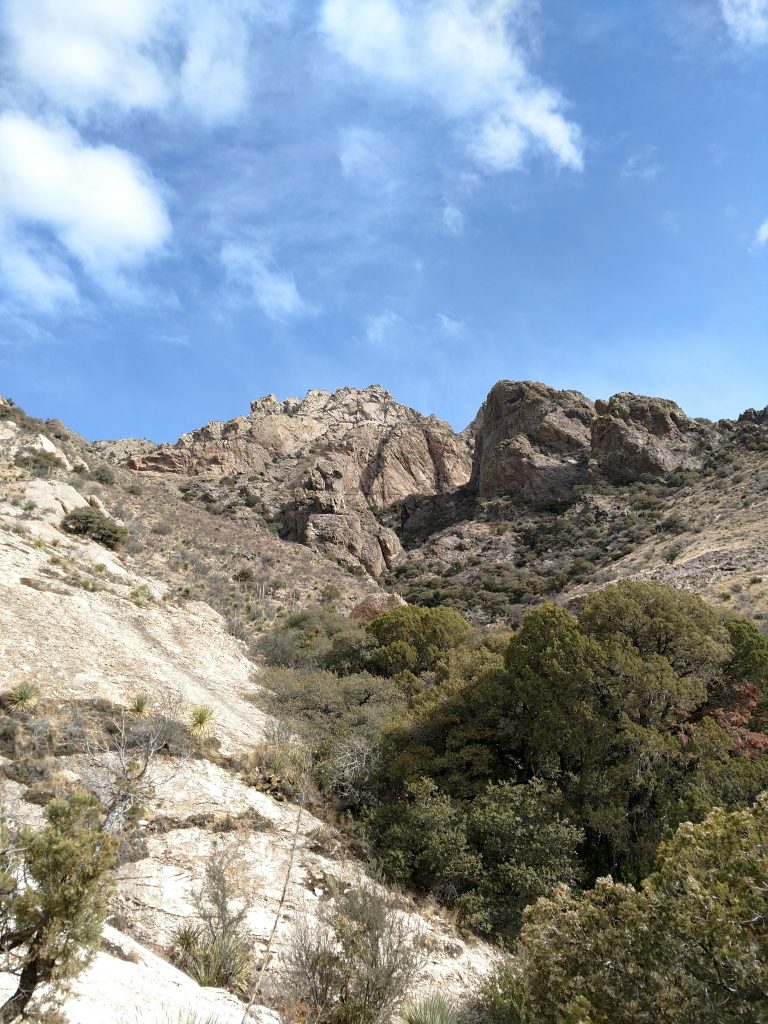
This section below Juniper Saddle is a bit confusing but I eventually found my way. It looked like multiple use trails existed. Note there's a lot of loose dirt and scree in this area. If this part makes you feel uncomfortable, you may want to re-assess your climb.
With slow going and a lot of cursing, I finally achieved Juniper Saddle (~7,700') and saw the clear route to Organ Needle.
Juniper Saddle to Organ Needle and the Crux
From other trip reports, I knew things could get dicey from here. Fortunately, the obvious use trail continued through a very narrow gully to the crux.
Organ Needle was now clearly visible and tantalizingly close but this section was rough. As I ascended the gully, the path became even more clear however I encountered a lot of ice. I really wish I packed microspikes.
It was slow going through the gully but I eventually made it to the top and visualized the crux.
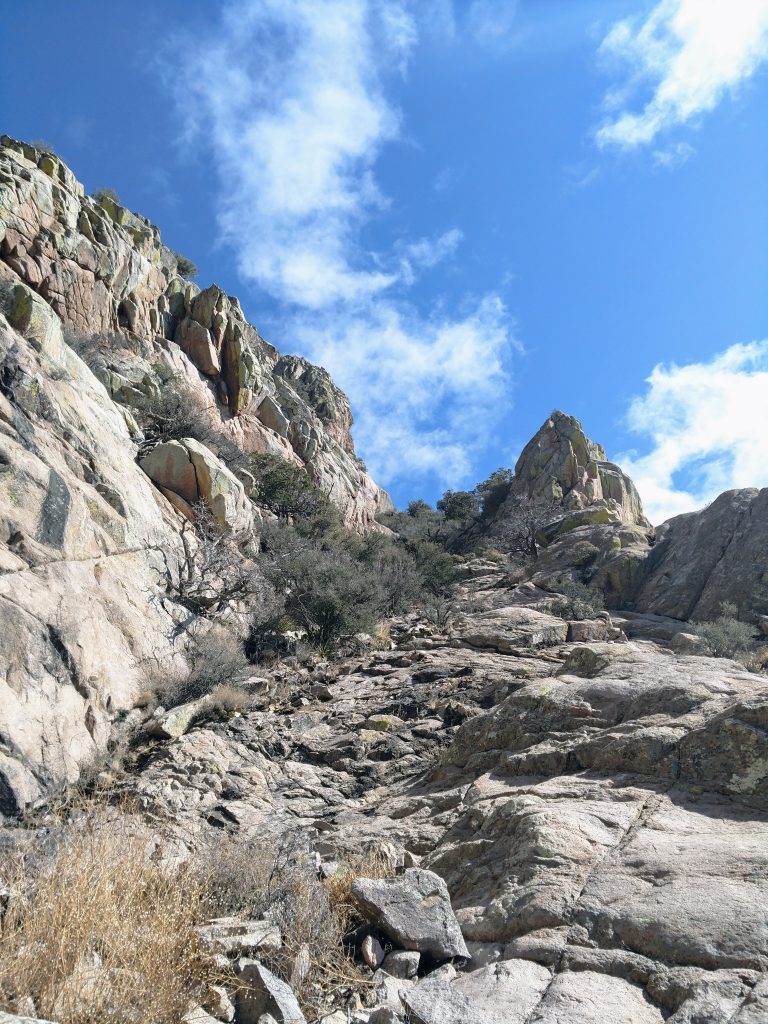
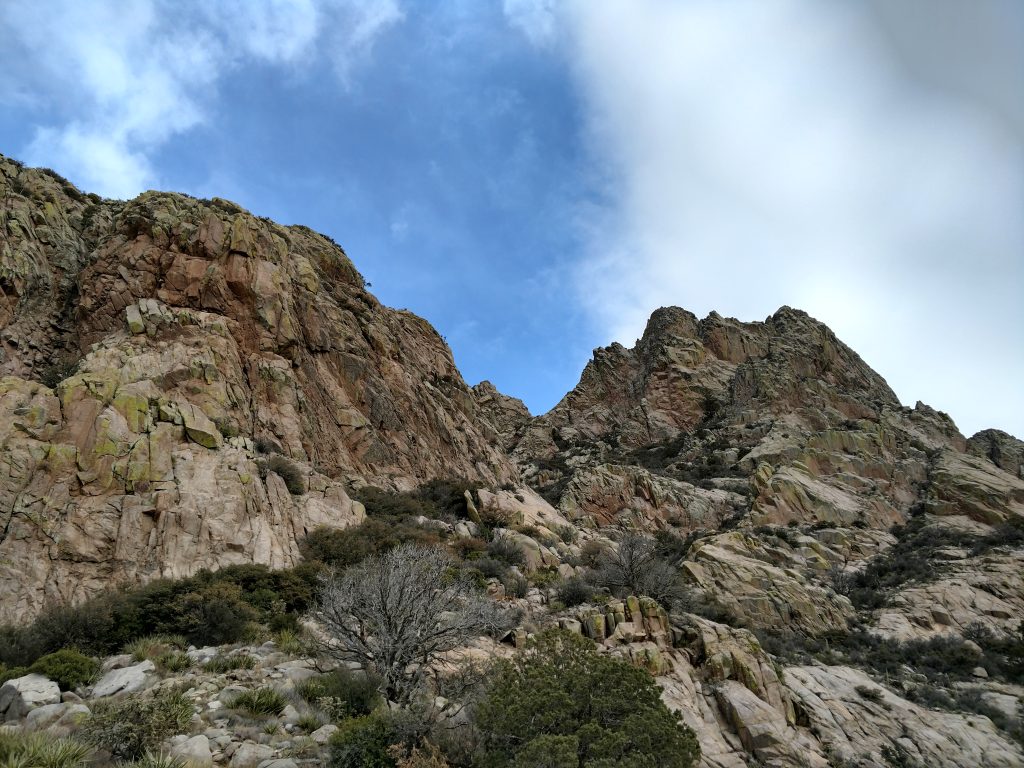
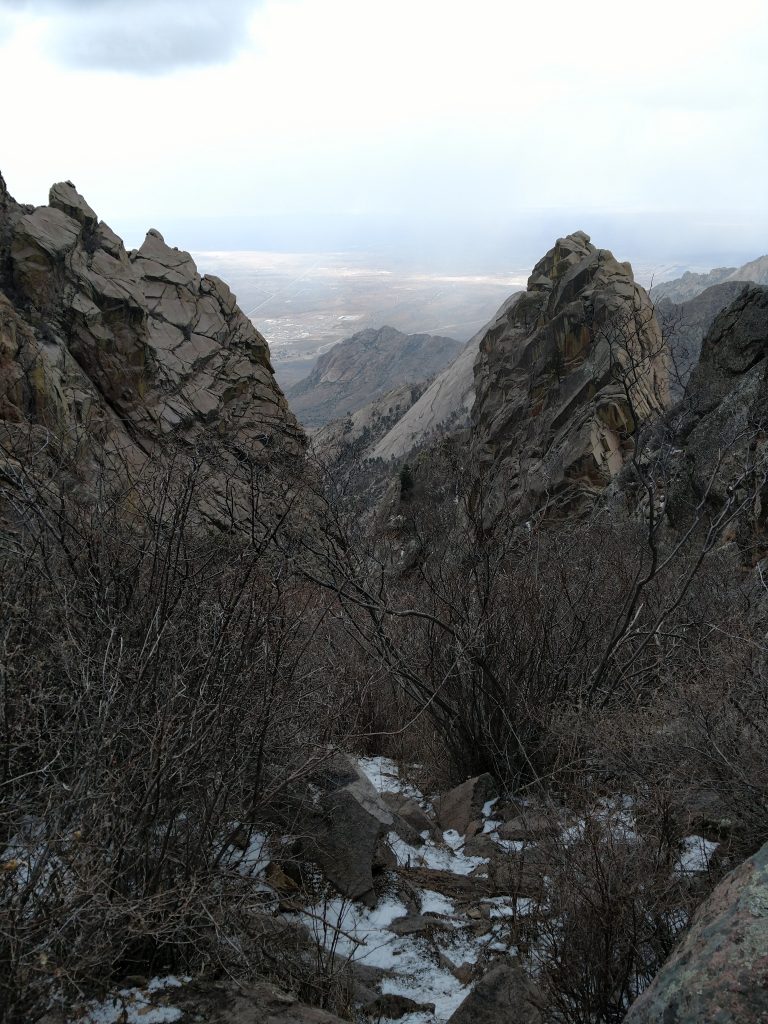
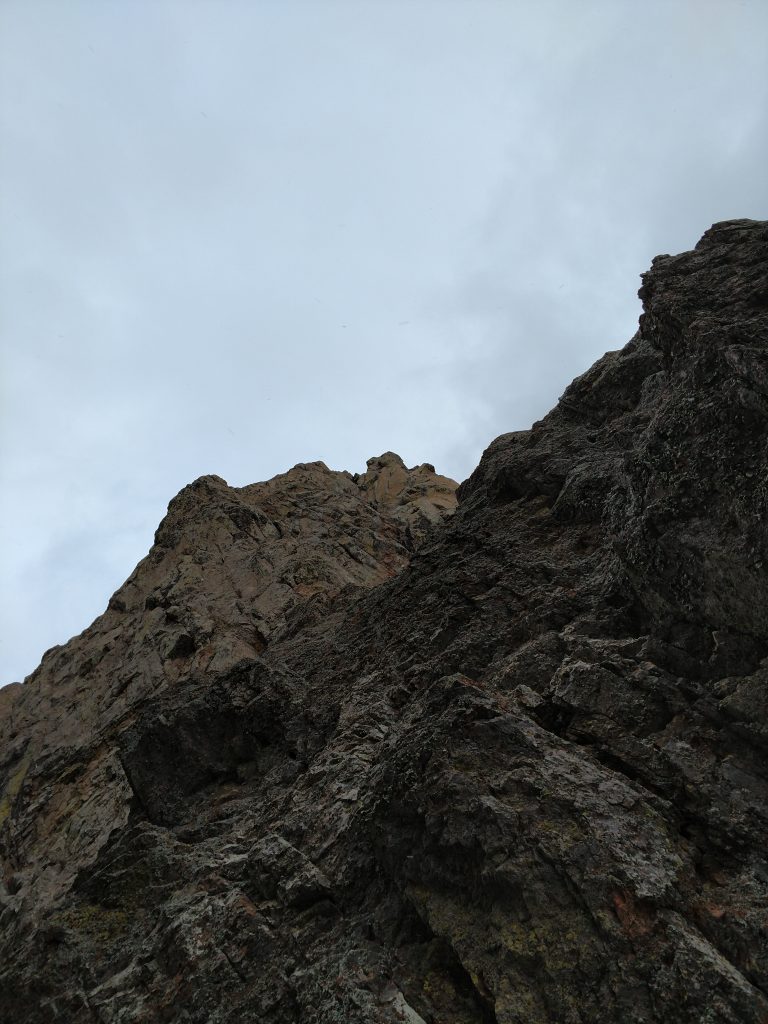
After finally making my way up the gully, I was just 150-200' short of the summit. I spotted a route (see picture above) that allowed an exposed but technically straightforward route to the summit.
The rock quality was generally good but that did not quell my anxiety. Plenty of exposure reminded me of the precariousness of scrambling. Slowly but surely, I made my way up to the summit. I noticed a slightly less exposed area near the crux however when I tried to climb it, the handholds were minimal. Though steeper and more exposed, the route I took from the gully proved to be the best.
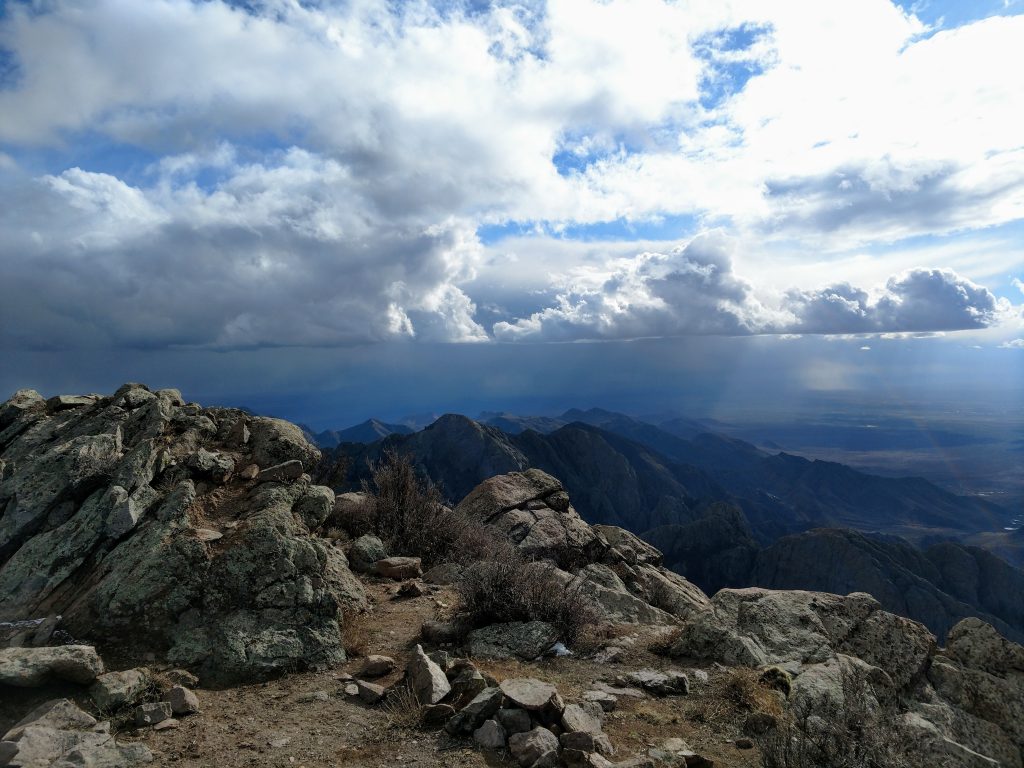
Views from the top were outstanding. The summit register was masssive and full of other people similarly remarking on their accomplishment. For me, the real battle of downclimbing still prevailed so I didn't spend much time on the summit.
Downclimbing
Although the summit is narrow, I still had some difficulty finding my way back down to the gully. Thank goodness I had a GPS with me- I followed my previous route to a T and eventually made my way back.
It took about the same time descending as it did ascending. Although I've understood this from other climbs, it always surprises me how difficult descending a scramble route is. Of course it began snowing on my way down.
Final thoughts? From a scrambling perspective, it was straightfowward. It wasn't as sustained as other scrambles yet the downclimb was more atrocious. I'm glad I did it but it would take some coaxing to do it again- mainly due to the downclimb.
If you seek a climb up Organ Needle, I hope this helps! Feel free to reach out if you need more details





No Comments